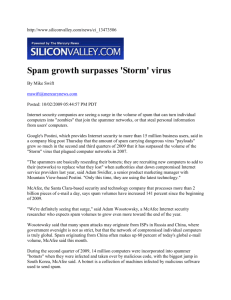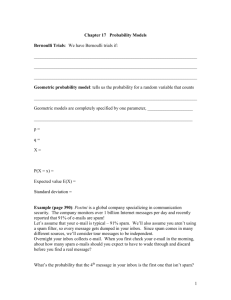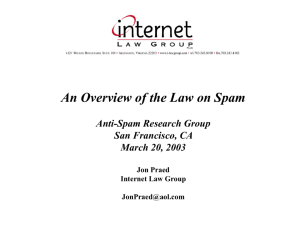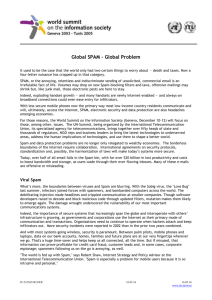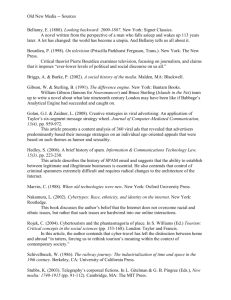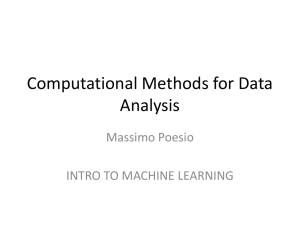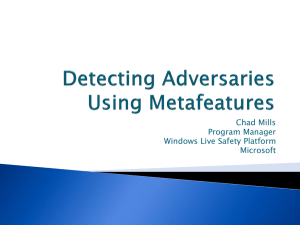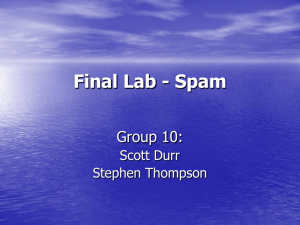Sadlier Test Prep Level E Unit 7
advertisement
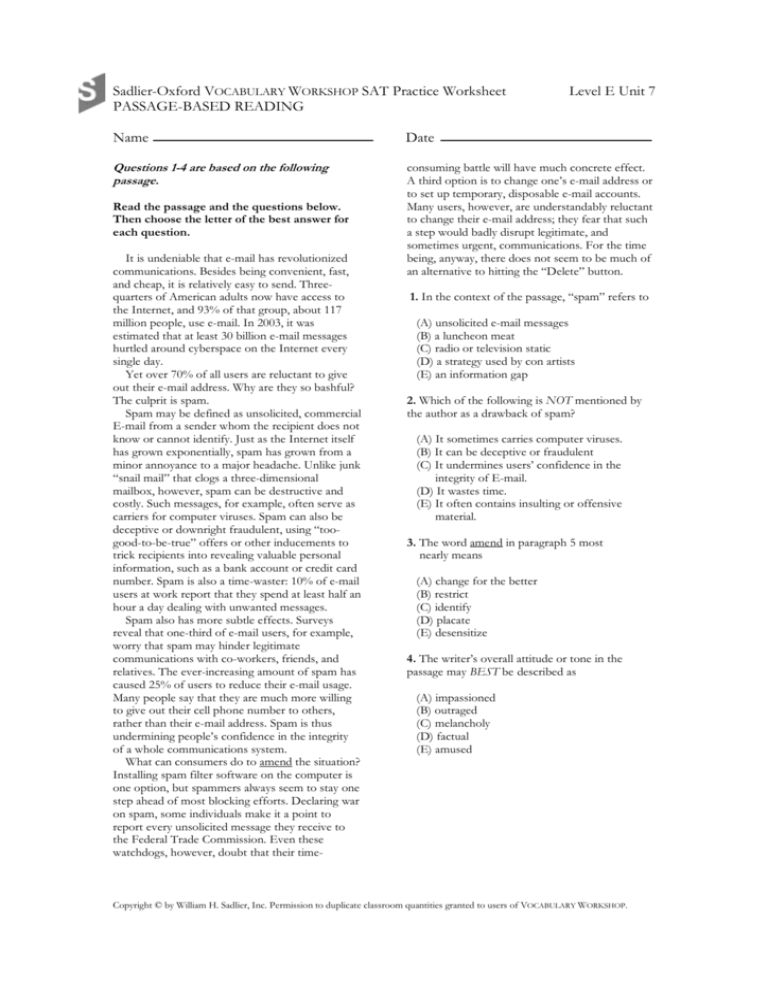
Sadlier-Oxford VOCABULARY WORKSHOP SAT Practice Worksheet PASSAGE-BASED READING Level E Unit 7 Name Date Questions 1-4 are based on the following passage. consuming battle will have much concrete effect. A third option is to change one’s e-mail address or to set up temporary, disposable e-mail accounts. Many users, however, are understandably reluctant to change their e-mail address; they fear that such a step would badly disrupt legitimate, and sometimes urgent, communications. For the time being, anyway, there does not seem to be much of an alternative to hitting the “Delete” button. Read the passage and the questions below. Then choose the letter of the best answer for each question. It is undeniable that e-mail has revolutionized communications. Besides being convenient, fast, and cheap, it is relatively easy to send. Threequarters of American adults now have access to the Internet, and 93% of that group, about 117 million people, use e-mail. In 2003, it was estimated that at least 30 billion e-mail messages hurtled around cyberspace on the Internet every single day. Yet over 70% of all users are reluctant to give out their e-mail address. Why are they so bashful? The culprit is spam. Spam may be defined as unsolicited, commercial E-mail from a sender whom the recipient does not know or cannot identify. Just as the Internet itself has grown exponentially, spam has grown from a minor annoyance to a major headache. Unlike junk “snail mail” that clogs a three-dimensional mailbox, however, spam can be destructive and costly. Such messages, for example, often serve as carriers for computer viruses. Spam can also be deceptive or downright fraudulent, using “toogood-to-be-true” offers or other inducements to trick recipients into revealing valuable personal information, such as a bank account or credit card number. Spam is also a time-waster: 10% of e-mail users at work report that they spend at least half an hour a day dealing with unwanted messages. Spam also has more subtle effects. Surveys reveal that one-third of e-mail users, for example, worry that spam may hinder legitimate communications with co-workers, friends, and relatives. The ever-increasing amount of spam has caused 25% of users to reduce their e-mail usage. Many people say that they are much more willing to give out their cell phone number to others, rather than their e-mail address. Spam is thus undermining people’s confidence in the integrity of a whole communications system. What can consumers do to amend the situation? Installing spam filter software on the computer is one option, but spammers always seem to stay one step ahead of most blocking efforts. Declaring war on spam, some individuals make it a point to report every unsolicited message they receive to the Federal Trade Commission. Even these watchdogs, however, doubt that their time- 1. In the context of the passage, “spam” refers to (A) unsolicited e-mail messages (B) a luncheon meat (C) radio or television static (D) a strategy used by con artists (E) an information gap 2. Which of the following is NOT mentioned by the author as a drawback of spam? (A) It sometimes carries computer viruses. (B) It can be deceptive or fraudulent (C) It undermines users’ confidence in the integrity of E-mail. (D) It wastes time. (E) It often contains insulting or offensive material. 3. The word amend in paragraph 5 most nearly means (A) change for the better (B) restrict (C) identify (D) placate (E) desensitize 4. The writer’s overall attitude or tone in the passage may BEST be described as (A) impassioned (B) outraged (C) melancholy (D) factual (E) amused Copyright © by William H. Sadlier, Inc. Permission to duplicate classroom quantities granted to users of VOCABULARY WORKSHOP.




